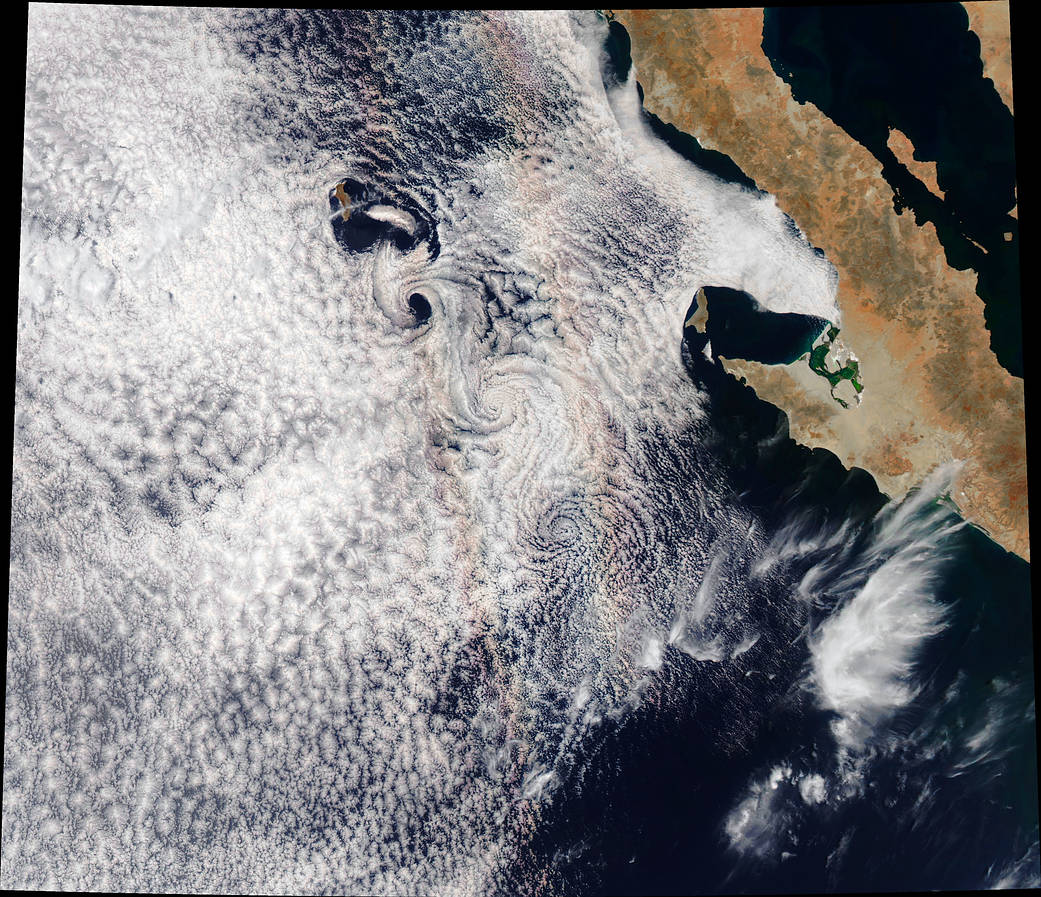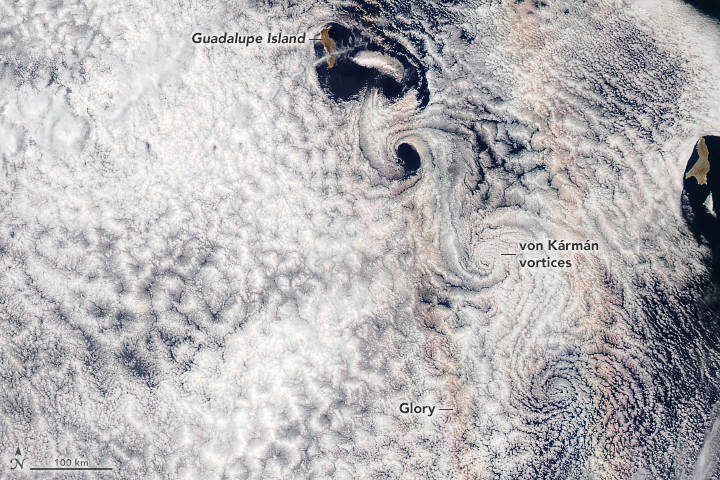
If you have ever seen a series of concentric rings of color near a mist or fog, you have likely seen a glory. This colorful optical phenomenon, bright red on the outside and blue toward the center, forms when water droplets scatter sunlight back toward a source of light.
These days, most people who fly regularly and spend time looking out the window have seen the circular feature around an aircraft’s shadow on the clouds. Astronauts flying on the space shuttles reported seeing circular glories from that look similar to what one might observe from an airplane.
Polar-orbiting satellite sensors, such as the Moderate Resolution Imaging Spectroradiometer (MODIS) on the Terra and Aqua satellites, get a somewhat different view. As MODIS scans Earth’s surface from an altitude of about 700 kilometers (400 miles), it makes swaths perpendicular to the path followed by the satellite. So an individual swath shows a horizontal cross-section through the glory circle, containing two colored areas. As a result, a glory in a natural-color satellite image from MODIS consists of two elongated, colorful bands parallel to the path of the satellite. The MODIS on the Terra satellite acquired this image of a glory near the eastern Pacific island of Guadalupe on June 3, 2018.
Another notable feature in this image are the swirling von Karman vortices visible between the glory. The alternating double row of vortices form in the wake of an obstacle—in this instance Guadalupe—as air masses get disturbed as they pass over this bump in the sea surface.
Image Credit: NASA Earth Observatory image by Joshua Stevens, using MODIS data from LANCE/EOSDIS Rapid Response
Caption: Adam Voiland


























